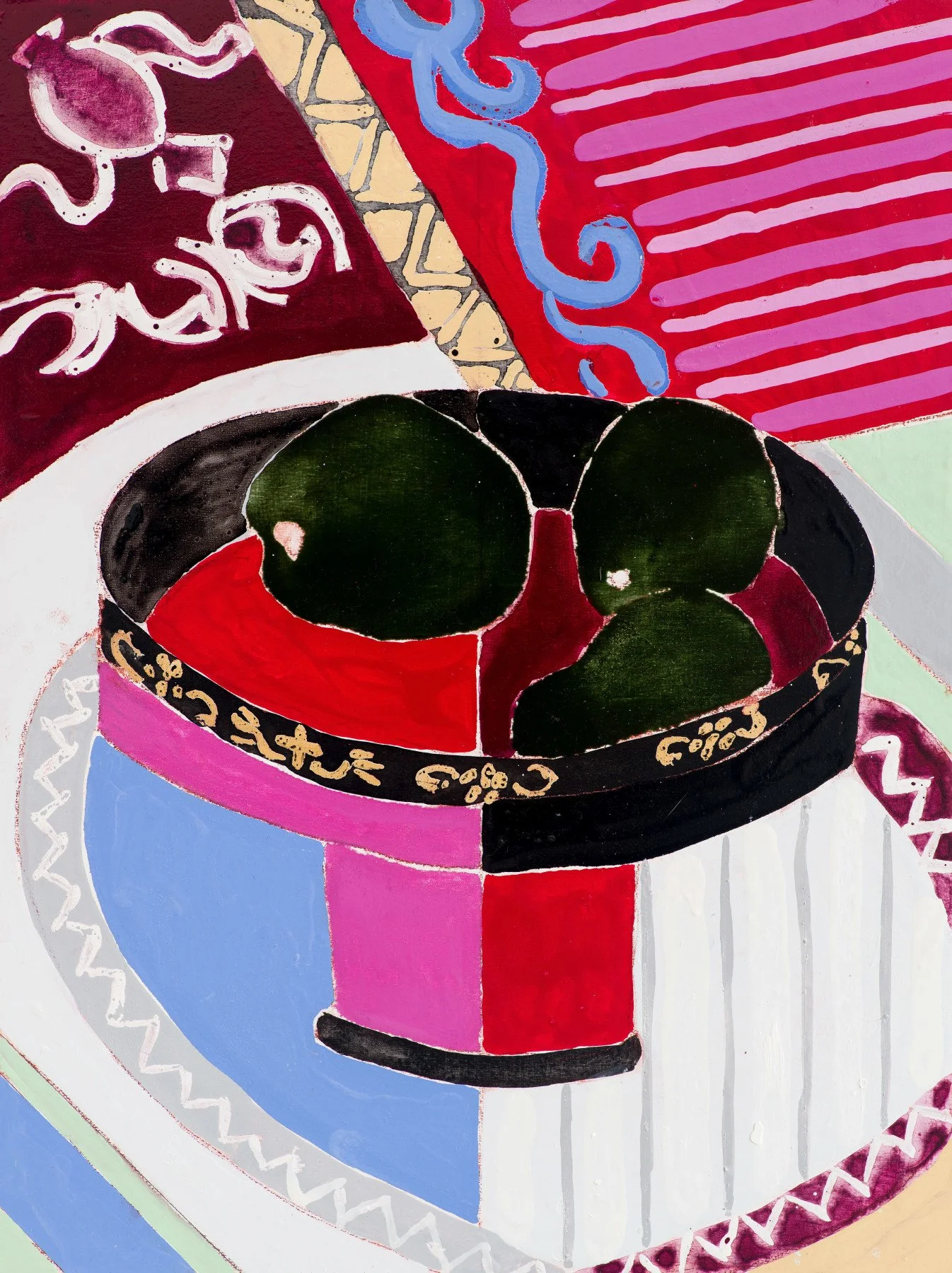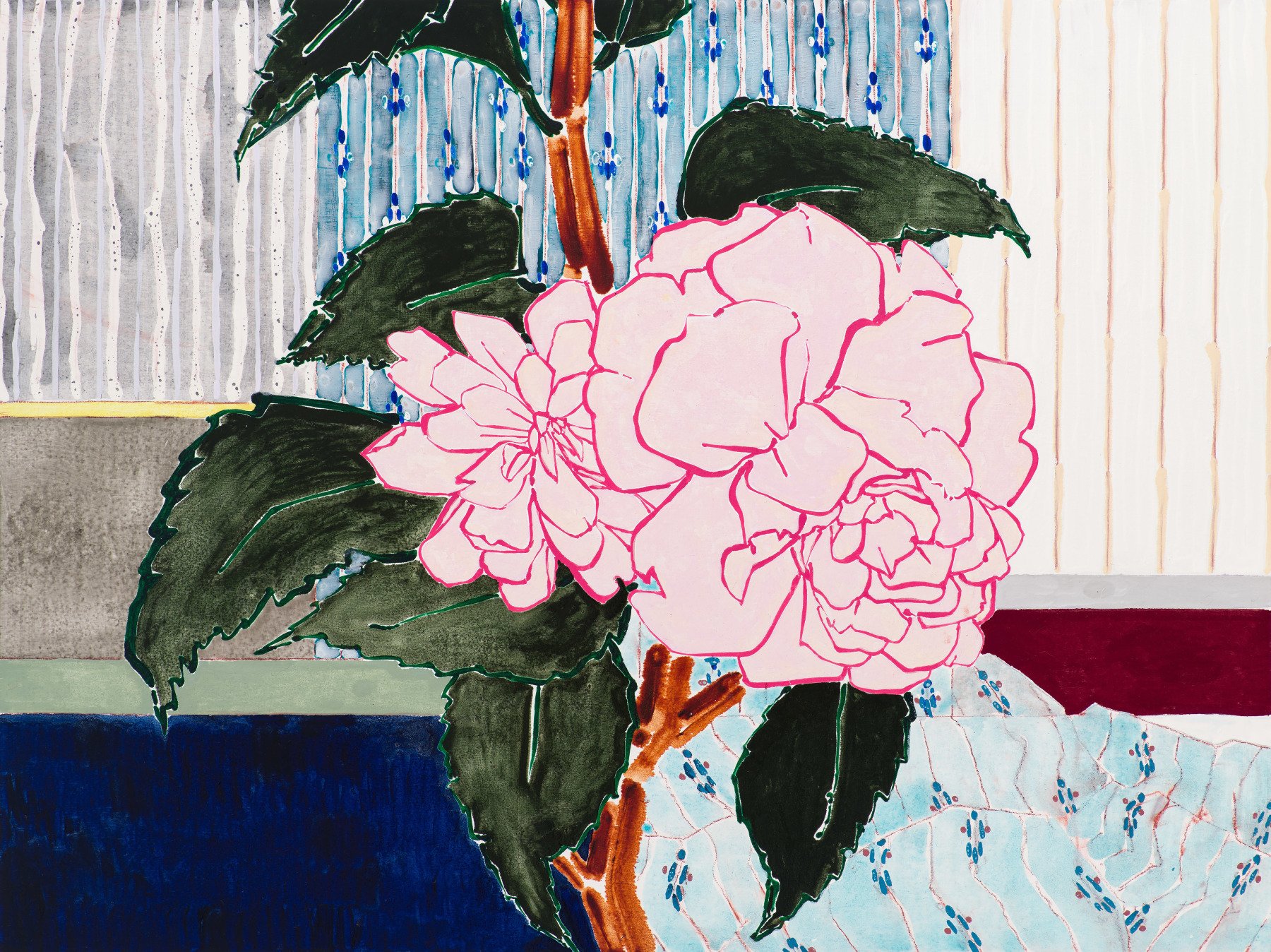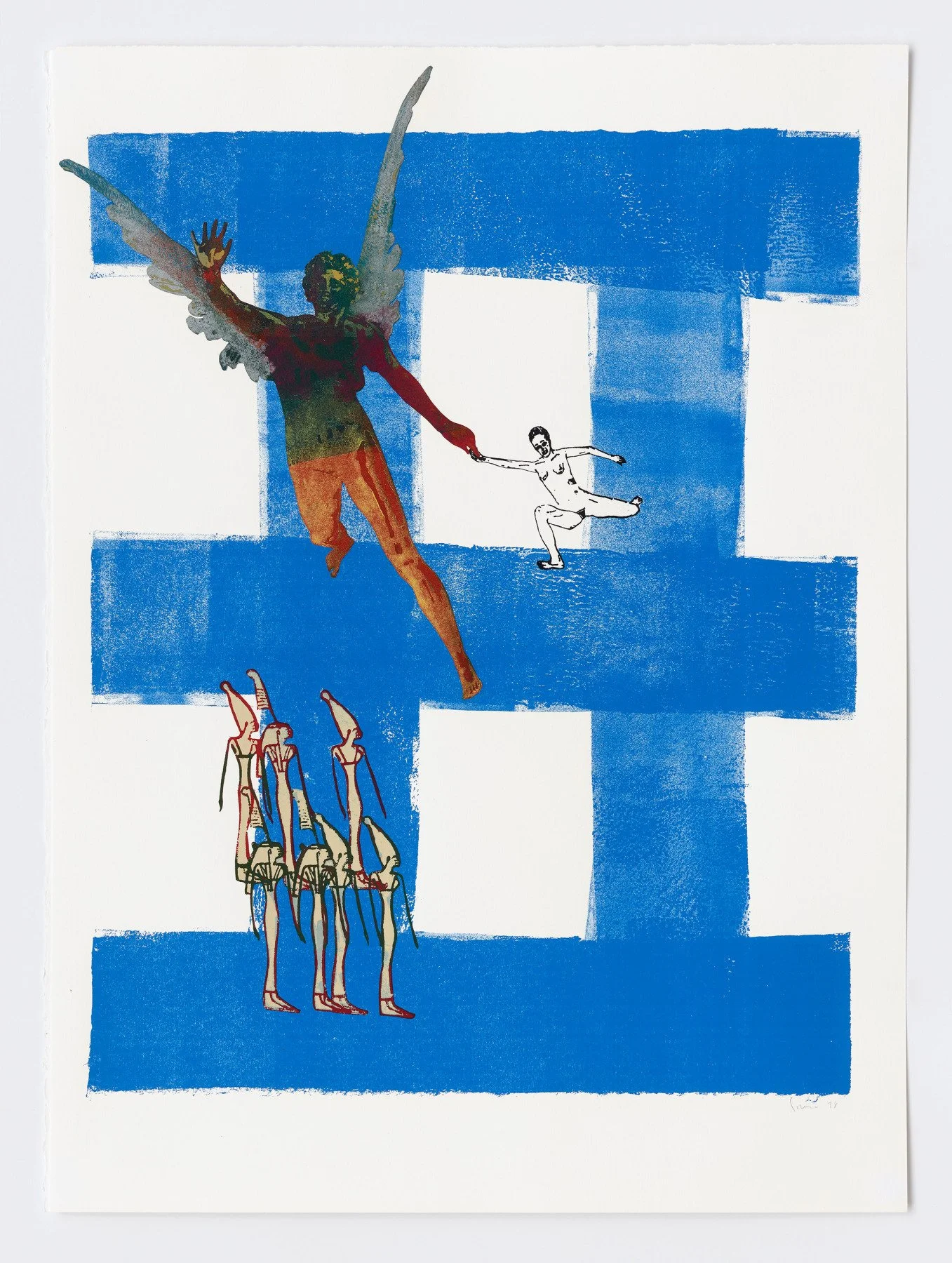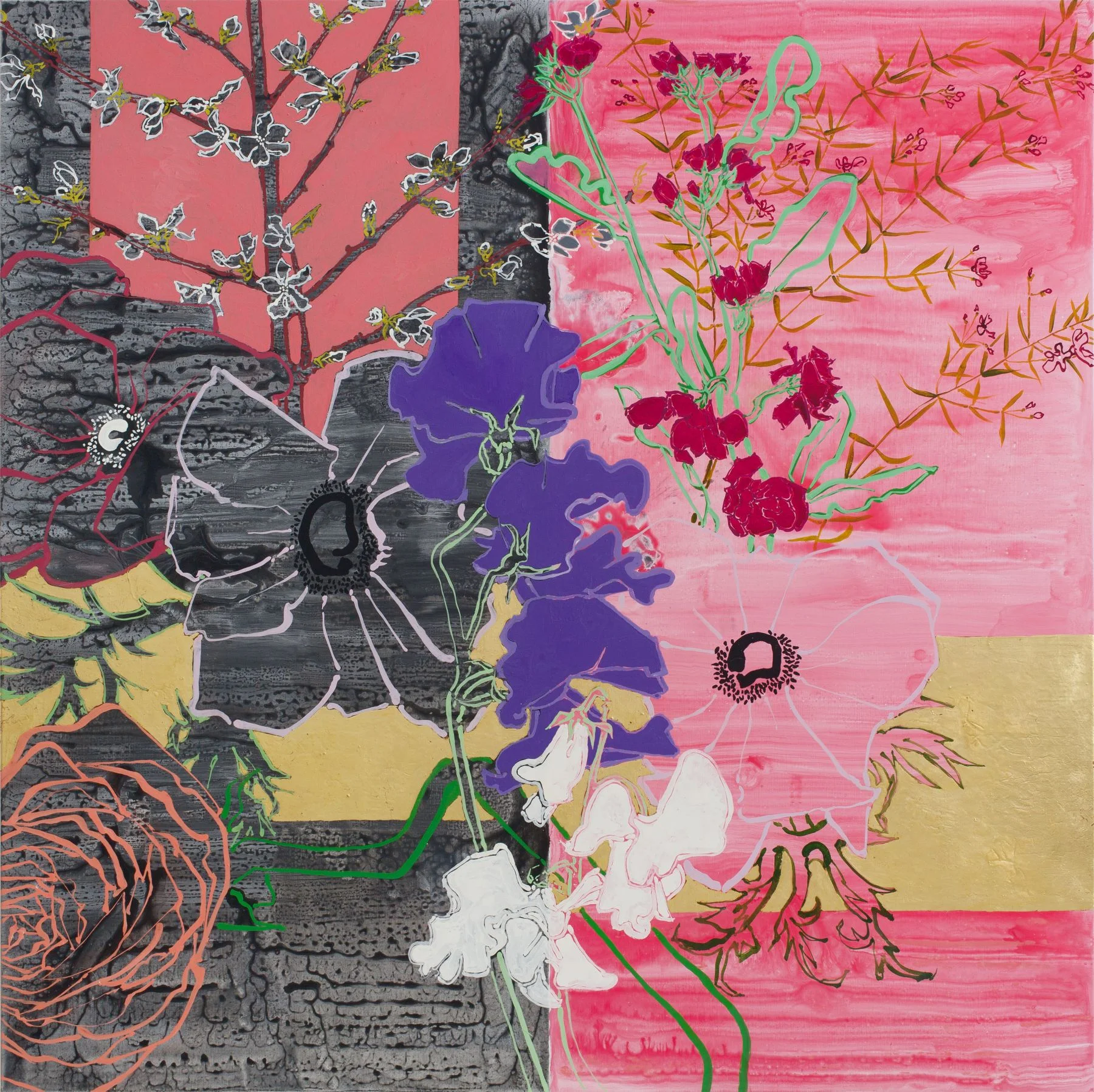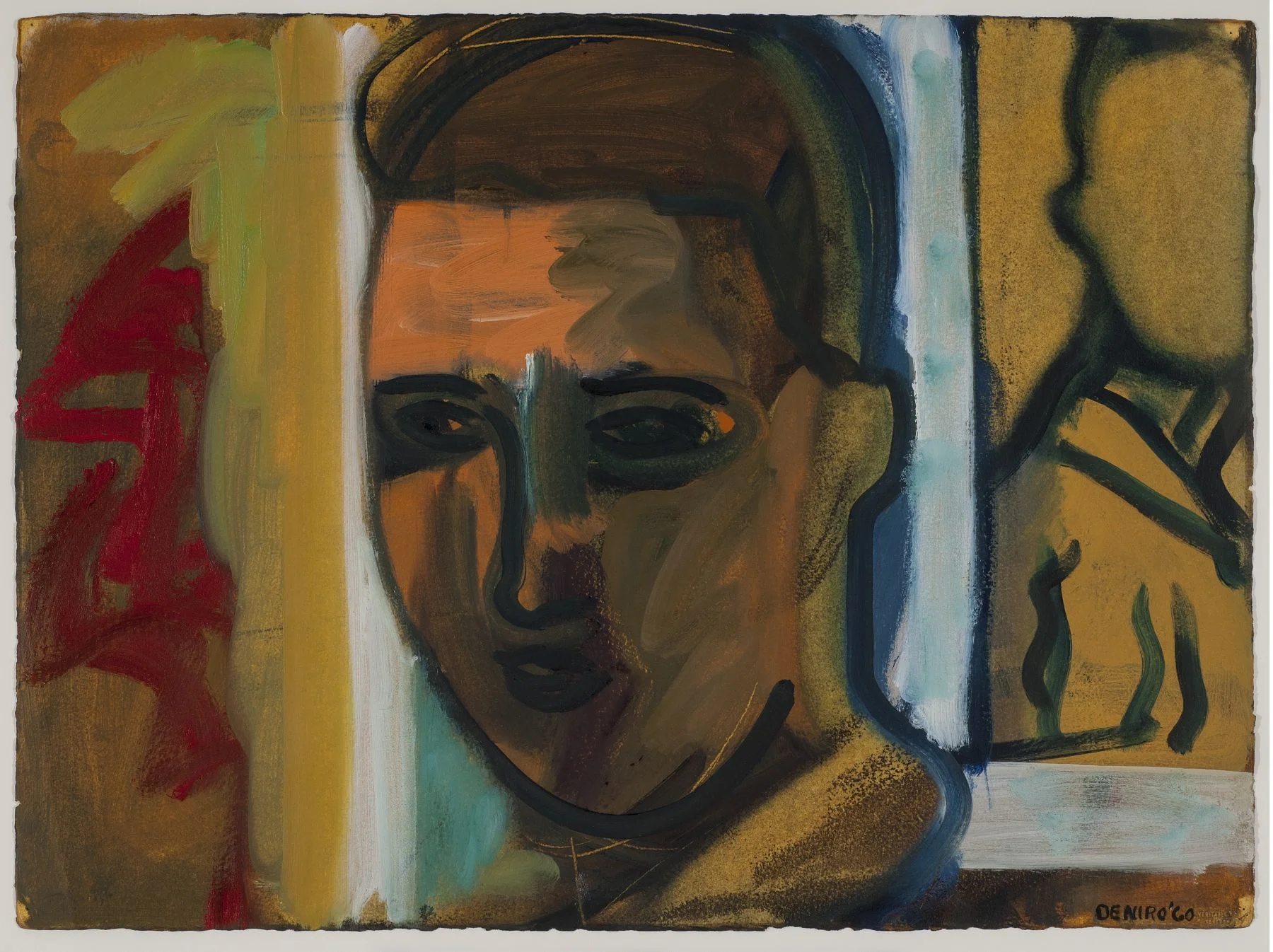Robert Kushner
“"Then & Now”
New York, 535 West 22nd Street
The artwork pairings in the exhibition invite the viewer to find resonances, or even discord, between the recent paintings and the early works. Throughout his career, several aspects of Kushner’s practice have remained constant: his use of color harmonies, pattern, an interest in expansive flatness, and the activation of surface texture, along with his continuous study of Henri Matisse. Looking at Visions Beyond the Pearly Curtain (1975) and For Betty (2022) together, for instance, the curving patterns painted on draped fabric accentuate the sinuous lines of the objects in the still life. The abstract floral patterns of the fabric works foreshadow Kushner’s long-standing investigation of flowers as a theme, as sources of beauty and nostalgia, as well as formally intricate relations of organic and geometric shapes.
Camellia Dawn I, 2022 Oil, acrylic, and conté crayon on wood panel 36 x 48 inches
Kushner first began using textiles and fabrics with acrylic paint in his 1971 performance pieces. In these performances, the fabrics were both functional pieces and art objects when the costumes were installed on the walls as two-dimensional objects. Through his use of fabric, Kushner connected painting, decoration, and clothing, while also blurring gender issues and questioning stereotypes of artistic practice and materials. By the mid-1970s, Kushner was creating wall-specific fabric paintings, ones that were not a part of a performance. His conscious decision to ignore the rise in popularity of reductivist painting on canvas, and to exhibit unstretched fabrics that were pinned to a wall, was a deliberate action that he continued until the mid-1990s. In 1988, Kushner first began to explore oil painting and collage on canvas. Though there was a fundamental shift in his practice at this time, Kushner continued to use color and pattern as fundamental building blocks in his paintings.
In his new paintings, textiles remain a cornerstone, with patterned kimonos and suzani fabrics composing the layered backgrounds of the still lifes, anchoring Kushner’s current practice to his early Pattern & Decoration roots. Kushner explains, “For me at this stage in my studio life, my own big picture is about pulling in as much as possible of my life experience. How wide a net, how big a panorama can I include in the works I am making now? … I am taking all my heroes and heroines and mentors and trying to pull them all together into a raucous colloquium.”

